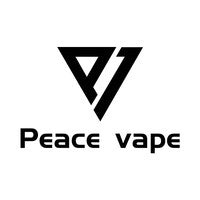
The landscape of nicotine products has experienced a striking evolution over the past decades, placing snus and vapes at the forefront of a rapidly changing industry. This transformation is not only seen in the products themselves but also in their design, which has been adapted to meet both the aesthetic and functional needs of the 21st-century consumer. The shifting trends in design reflect an intricate dance between style and functionality as manufacturers strive to appeal to a discerning market while also enhancing the user experience. This article explores the evolution of snus and vape designs, tracing their journey from traditional origins to modern counterparts.
Snus Design Evolution
The design evolution of snus, a smokeless tobacco product, is both intriguing and consumer-centric. Initially, snus came in practical containers, prioritizing functionality over aesthetics. However, modern helwit snus designs now feature unique, stylish containers that blend traditional and modern elements. The color scheme is typically monochromatic, with metallic accents for a sleek, contemporary look. This aesthetic evolution meets the market demand for functional and visually appealing products.
Moreover, snus packaging has become more compact and discreet, catering to the growing demand for products that can be used in social settings without drawing unnecessary attention. This has led to the introduction of slim and mini portions, as well as redesigned containers with sleeker profiles. The growing popularity of all-white snus, which does not stain teeth, has also influenced design trends, leading to the use of materials like ceramic and enamel for a more premium look.
Vape Design Evolution
Vapes, on the other hand, have undergone a radical transformation in design since their inception. From basic cig-a-likes to sleek and customizable devices, vapes have come a long way in terms of both form and function. The early versions of vapes were bulky and often resembled traditional cigarettes, but as the market expanded, manufacturers began incorporating ergonomic and fashionable elements into their designs.

Today, vapes come in a wide array of colors and finishes, with customizable options for users to mix and match according to their preferences. This personalization element has become a defining feature of vape design, reflecting the consumer’s desire for products that align with their style. Furthermore, the development of pod-based systems has led to more compact and portable designs, making vapes even more convenient for on-the-go use.
The Future of Snus and Vape Designs
As consumer preferences continue to evolve, so will the design trends for snus and vapes. With sustainability being a growing concern, there is an increasing demand for eco-friendly packaging options that minimize waste. This has led to the introduction of biodegradable materials and refillable designs for both snus and vapes.
In addition, technology has also begun to play a significant role in the design of these products. Smart devices that can track usage and provide customizable settings are becoming more prevalent in the vaping industry, while snus manufacturers are experimenting with new heating methods to enhance the user experience.
As consumer demands continue to change and evolve, the designs of snus and vapes will likely also adapt accordingly. This ongoing evolution is a testament to the commitment of manufacturers to creating products that not only meet functional needs but also cater to the ever-changing aesthetic preferences of consumers. So, whether you prefer traditional or modern designs, there is no doubt that both snus and vapes will continue to push the boundaries of design innovation in the years to come.
